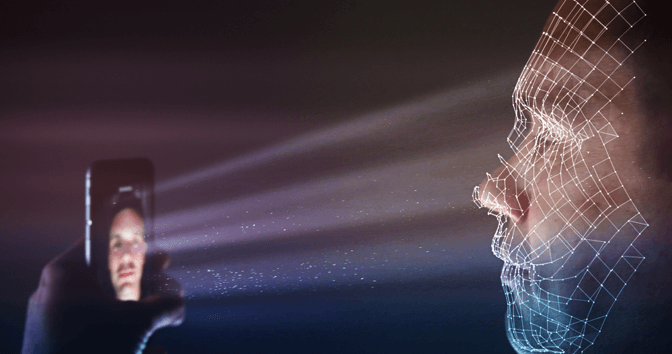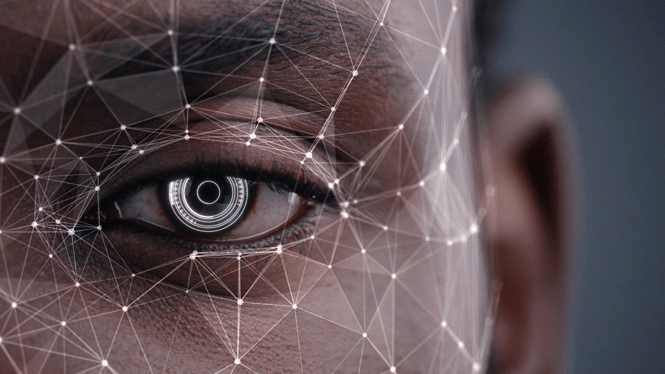Facial Recognition In Our Own And Gambling Future
As technology progresses, more and more applications use facial-recognition software to enhance user experiences by creating an easier way to access everyday life.
The use of facial recognition software has been the subject of much heated debate. In 2018 on Taylor Swift's Reputation tour, security professionals scanned fans' faces, and the police compared the results against a database of her hundreds of known stalkers. While most will agree keeping Taylor Swift safe is a priority, it's the everyday use that has become part of everyday life that is most significant.
For instance, in 2017, Apple's Face ID, facial-recognition technology, launched on the iPhone X. The technology replaces Apple's Touch ID fingerprint scanning system for the company's latest iPhones, and it will likely be found on future iPhones as a matter of course.
The iPhone technology may seem insignificant, but it means no-one but can activate your phone or participate in any of your online activities; this is an example of the benefits of facial recognition technology. However, not everyone is convinced. Let's go back to the beginning and see how facial recognition became integral in all of our lives.
 Royalty-free stock photo ID: 723081853
Royalty-free stock photo ID: 723081853A Brief History
Facial recognition technology has been in the development process since the 60s and is rumoured to be a project funded by the intelligence agency, but which agency is not common knowledge. The progress was slow and steady until the arrival of advanced artificial networks, such as computer systems and the internet.
Systems are modelled on animal brains to recognise patterns; this has allowed human programmers to feed these programs with thousands of photos of faces and then set the algorithms to teach themselves to recognise faces.
The technology is so intelligent it can tell faces apart and recognise if a person's face in one picture is the same in a different picture. What's more, this ability continues to match images even if a person is wearing makeup, sunglasses, or the image is of poor quality. The more images an algorithm has to learn from, the more accurate it becomes.
In the early 90s, DARPA (The Defence Advanced Research Projects Agency) and NIST (National Institute of Standards and Technology) took the technology one step further. They rolled out the FERET programme (Face Recognition Technology) to enhance homeland security and enter the commercial facial recognition market. The rest is mere history!
 Royalty-free stock photo ID: 1651644205
Royalty-free stock photo ID: 1651644205Facial Recognition and Gambling
Precisely how the gambling industry can use this new tech is yet to be seen, but some say using facial recognition technology could be as much of a minefield as it is a benefit.
Everyone wants to be remembered, and a great tool in any customer services team's armoury is facial recognition software. The application will allow a casino operator to automatically recognise their customers and adjust service to match in real-time.
Facial recognition will allow camera-equipped games and slot machines to recognise and log in players using the database to cut down on fraud and increase the potential for a casino to entice new players with exciting signup deals and enrol them into loyalty programs. Existing customers will have their self-regulation schemes enforced, or casinos will prevent banned players from signing in.
Eventually, facial recognition will read a player's face and stop the play if signs of stress or anxiety are registered, allowing for a cooling-off period or time-out. Some might say this goes too far towards a ‘nanny' state, while others recognise this benefits the customer's overall mental health.
In practical terms within the casino, facial recognition cameras could reduce pit managers' work or front of house staff by allowing them to identify and track players instantly instead of relying on guesswork.
Facial Recognition and Everyday Life
Without realising it, facial recognition technology is part of day-to-day life; anyone who has flown recently will have used the self check out biometric technology in the airport. Did you know Uber uses the technology as a safeguard against fraud and confirms its drivers' identity? FERET is often used in conjunction with other forms of technology to achieve an overall picture.
We all know facial recognition technology is used by the police and law enforcement worldwide to identify, monitor and catch criminals. Police services team up with private sector technology to aid in facial recognition and use existing surveillance systems such as CCTV (closed-circuit television cameras) to monitor the public buildings and places of interest.
While most people will agree that technology can keep the public safe in the right hands since there aren't any laws requiring disclosure, anyone can use it, and they do. Every time you add a holiday photo to Facebook or upload an image to Instagram, you are feeding the algorithms, connecting with people who may or may not have your best interests at heart.
839GYLCCC1992



Leave a Reply